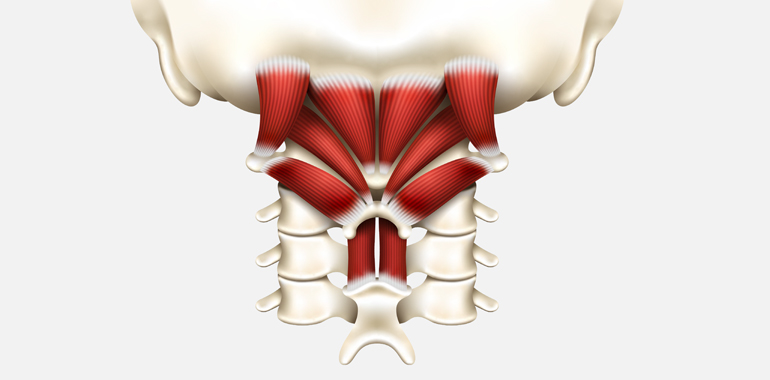The Basics
The key concepts to understand before learning the secrets.
Beginners Guide to Chiropractic
The word chiropractic derives from the Greek words “cheir”, meaning hand, and “practikos” meaning skilled in or concerned with. The origin of the word chiropractic can be traced back to D.D. Palmer coined it in 1895 when he founded chiropractic.
Chiropractic care is really about total health and wellbeing
What does a Chiropractor do?
A chiropractor is a healthcare professional who specializes in the health and function of the spine and nervous system. Because of this focus on the spine, many people think chiropractors can only help with back pain, neck pain, and headaches. They can often help with these issues, but there is much more to chiropractic than just pain.
This is the first video in our animated series, “Introduction to Chiropractic.” In it, we outline what a chiropractor does and briefly explore the effects of care. It is perfect for anyone curious about chiropractic care and how it can help their family.
Vertebral Subluxation
Because of the close relationship between the spine and the nervous system, every day strains can impact the flow of information and communication between the brain and the body. Messages may not be delivered to the brain, or they may be inaccurate. When that miscommunication occurs due to abnormal movement in the spine, chiropractors call this a ‘vertebral subluxation’, or a “chiropractic subluxation”.
You might hear it again from your chiropractor – so now you know what it means.
References
- Rosner AL. Chiropractic identity: A neurological, professional, and political assessment. J Chiropr Humanit 2016;23(1):35-45.
- de Souza R, Ebrall P. Understanding wellness in a contemporary context of chiropractic practice. Chiropr J Aust 2008;38(1):12-16.
- Schuster TL, Dobson M, Jauregui M, et al. Wellness lifestyles II: Modeling the dynamic of wellness, health lifestyle practices, and Network Spinal Analysis. J Altern Complement Med 2004;10(2):357-67.
- Henderson CN. The basis for spinal manipulation: Chiropractic perspective of indications and theory. J Electromyogr Kinesiol 2012;22(5):632-42.
- Haavik H, Murphy B. The role of spinal manipulation in addressing disordered sensorimotor integration and altered motor control. J Electromyogr Kinesiol 2012;22(5):768-76.
- Haavik Taylor H, Holt K, Murphy B. Exploring the neuromodulatory effects of the vertebral subluxation and chiropractic care. Chiropr J Aust 2010;40(1):37-44.
- Herzog W, Zhang YT, Conway PJ, et al. Cavitation sounds during spinal manipulative treatments. Journal of Manipulative & Physiological Therapeutics 1993;16(8):523-6.
- Haavik H, Kumari N, Holt K, Niazi IK, Amjad I, Pujari AN, Türker KS, Murphy B. The contemporary model of vertebral column joint dysfunction and impact of high-velocity, low-amplitude controlled vertebral thrusts on neuromuscular function. Eur. J. Appl. Physiol. 2021; doi: 10.1007/s00421-021-04727-z. Advance online publication.
- Haavik H, Niazi IK, Kumari N, Amjad I, Duehr J, Holt K. The potential mechanisms of high-velocity, low-amplitude, controlled vertebral thrusts on neuroimmune function: A narrative review. Medicina (Kaunas, Lithuania). 2021;57(6). doi:10.3390/medicina57060536
How the Brain Perceives the World
Your brain receives constant messages about your body and the external environment from the sensory organs. That’s your eyes, ears, nose, tongue, skin, and so on. With this information, your brain maintains a 3D map of your body and keeps a tab on what’s happening outside your body.

How your brain sees a situation may not be entirely accurate
Perception of Reality
Sometimes your brain even ‘fills in the blanks on your behalf, and your experience isn’t 100% based on reality but is instead a perception of reality. An interesting way to demonstrate how the brain’s inner reality is a perception is using the classic checker shadow illusion, created by Edward H Adelsen from the Massachusetts Institute of Technology.
Experience isn’t based on Reality
So how you – or your brain – sees a situation may not be entirely accurate. Sometimes your brain even ‘fills in the blanks on your behalf! That means your experience isn’t 100% based on reality but is instead a perception of reality.
References
- Kleim JA, Jones TA. Principles of experience-dependent neural plasticity: Implications for rehabilitation after brain damage. Journal of speech, language, and hearing research 2008;51(1):S225-39
- Nelson CA. Neural plasticity and human development. Current directions in psychological science 1999;8(2):42-45.
- Maravita A, Spence C, Driver J. Multisensory integration and the body schema: Close to hand and within reach. Current Biology 2003;13(13):R531-R39. doi: 10.1016/S0960-9822(03)00449-4
- Kolb B, Whishaw IQ. Brain plasticity and behavior. Annual Review of Psychology 1998;49(1):43-64. doi: 10.1146/annurev.psych.49.1.43
- McGann JP. Associate learning and sensory neuroplasticity: How does it happen and what is it good for? Learning & Memory 2015;22:567-76.
- Holmes NP, Spence C. The body schema and multisensory representation(s) of peripersonal space. Cognitive Processing 2004;5(2):94-105. doi: 10.1007/s10339-004-0013-3
- Medina J, Coslett HB. From maps to form to space: Touch and the body schema. Neuropsychologia 2010;48(3):645-54. doi: 10.1016/j.neuropsychologia.2009.08.017
- Morasso P, Sanguineti V. Self-organizing body schema for motor planning. Journal of Motor Behavior 1995;27(1):52-66. doi: 10.1080/00222895.1995.9941699
- Haavik H, Kumari N, Holt K, Niazi IK, Amjad I, Pujari AN, Türker KS, Murphy B. The contemporary model of vertebral column joint dysfunction and impact of high-velocity, low-amplitude controlled vertebral thrusts on neuromuscular function. Eur. J. Appl. Physiol. 2021;121(10):2675-2720. doi: 10.1007/s00421-021-04727-z. Advance online publication.
- Haavik H, Niazi IK, Kumari N, Amjad I, Duehr J, Holt K. The potential mechanisms of high-velocity, low-amplitude, controlled vertebral thrusts on neuroimmune function: A narrative review. Medicina (Kaunas, Lithuania). 2021;57(6). doi:10.3390/medicina57060536
Chiropractic Affects your Brain
When you think of muscles, you probably think of your biceps and triceps. You won’t necessarily think of the small muscles close to your spine and skull. These small muscles do in fact play a very important role – they tell your brain what your spine is doing, which represents what the core of your body is doing.

Chiropractic adjustments help restore healthy movement
Spinal Dysfunction
If your spinal segments aren’t moving correctly it may cause background noise for your brain or your brain might not get adequate information about what’s happening in your body, and will therefore have to fill in blanks. When your brain can accurately perceive what is going on inside and out, it can better control your body for the situation at hand.
Reboot Your Brain
A chiropractor will gently adjust any dysfunctional spinal segments, or what they call vertebral subluxations, to restore healthy movement. This can improve the communication between your brain, your body and the environment. It is a lot like rebooting a computer.
References
- Haavik H, Murphy B. The role of spinal manipulation in addressing disordered sensorimotor integration and altered motor control. J Electromyogr Kinesiol 2012;22(5):768-76.
- Pickar JG. Neurophysiological effects of spinal manipulation. Spine J 2002;2(5):357-71.
- Pickar JG, Bolton PS. Spinal manipulative therapy and somatosensory activation. J Electromyogr Kinesiol 2012;22(5):785-94.
- Haavik H, Murphy B. Subclinical neck pain and the effects of cervical manipulation on elbow joint position sense. J Manipulative Physiol Ther 2011;34(2):88-97.
- Holt KR, Haavik H, Lee AC, et al. Effectiveness of chiropractic care to improve sensorimotor function associated with falls risk in older people: A randomized controlled trial. J Manipulative Physiol Ther 2016;39(4)267-78
- Haavik H, Kumari N, Holt K, Niazi IK, Amjad I, Pujari AN, Türker KS, Murphy B. The contemporary model of vertebral column joint dysfunction and impact of high-velocity, low-amplitude controlled vertebral thrusts on neuromuscular function. Eur. J. Appl. Physiol. 2021;121(10):2675-2720. 10.1007/s00421-021-04727-z.
- Haavik H, Niazi IK, Kumari N, Amjad I, Duehr J, Holt K. The potential mechanisms of high-velocity, low-amplitude, controlled vertebral thrusts on neuroimmune function: A narrative review. Medicina (Kaunas, Lithuania). 2021;57(6). doi:10.3390/medicina57060536

